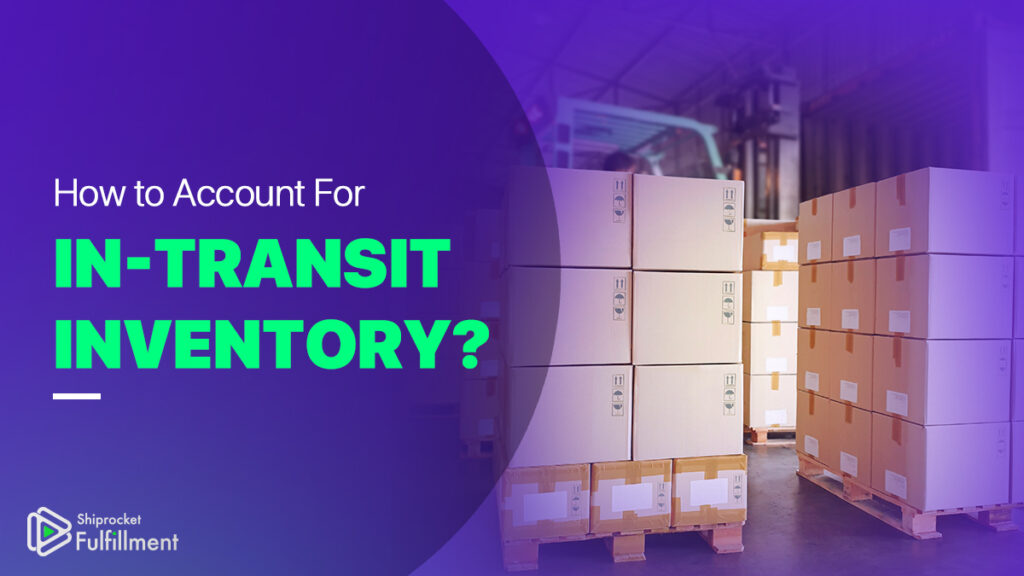A well-managed inventory flow is key to an efficient supply chain. Without it, it becomes difficult to understand how much and when inventory is required to keep your business running. Other important decisions, like where to store inventory, also depend on a well-managed inventory flow.

It is comparatively easier to account for your purchased and received inventory. But what about the stock that is in transit? To get a holistic picture of your inventory in hand, it is crucial that you also account for the inventory that you have purchased and is in transit.
To simplify things, we will talk about goods in transit and how you can account for them.
What are Goods in Transit?
Goods purchased, shipped by the seller, and yet to reach the buyer are called goods in transit. Often, this inventory goes unnoticed while accounting for the inventory as it is not present at the seller’s place or warehouse in physical form.
Who Owns Goods in Transit?
The terms of sale decide the ownership of the inventory in transit. If the buyer is the inventory owner, he is liable to arrange the shipping of the goods. Accordingly, when the seller is responsible for the shipment, he is the owner of goods in transit.
In straightforward terms, if the sale of goods takes place only when the goods reach their destination, the ownership stays with the seller. Thus, the sale or purchase is not recorded in the books until the goods reach their destination, i.e., to the buyer.
Alternatively, the title is passed on to the buyer if the sale occurs before the goods are shipped. So, in case the buyer arranges for the shipment, the sale and purchase are immediately recorded in the books.
Accounting for In-Transit Goods

The ownership of goods plays a vital role in deciding the accounting for transit goods. If the title is not passed to the buyer, no sale or purchase has been made. Thus, the inventory is still included in the seller’s ending inventory.
However, if the title is passed, the seller records the sale in his books along with a receivable or cash. He doesn’t include the sold items in his ending inventory. Similarly, the buyer records the payable in his books and consists of the goods purchased in the ending inventory against it.
Insuring In-Transit Goods: A Good Idea?
Insuring in-transit goods can help reduce accidental risks. Even if you haven’t made the sale in your books, any problem during transit, like goods misplacement, shipping damages, or even slowdowns, might leave you in a jeopardized situation. It helps to have a contingency plan in place.
You can get your in-transit goods insured against natural disasters, theft, accidents, derailing when shipping by train, and sinking when shipping by sea. The goods’ owner will get appropriate insurance coverage depending on the sale terms.

Role of a 3PL Service Provider
When a business is in its growing stage, sometimes it becomes challenging to manage inventory. Here, 3PL service providers like Shiprocket Fulfillment can be the best go-to option. They not just help manage inventory but also pick, pack, and ship orders on your behalf. With their expertise, they can process orders with utmost accuracy and decrease shipping errors.
With a 3PL service provider, you can store your inventory in multiple fulfillment centers across the country and deliver orders the same or the next day. You also get access to the latest logistics solutions that help decrease shipping costs by a substantial margin and lower weight discrepancies.
Final Thoughts
When it comes to maintaining an effective supply chain process, taking your in-transit inventory into account is critical. You can also partner with 3PL providers like Shiprocket Fulfillment to distribute your inventory in different fulfillment centers across the country. This will reduce the in-transit time, associated risks and shipping costs.






